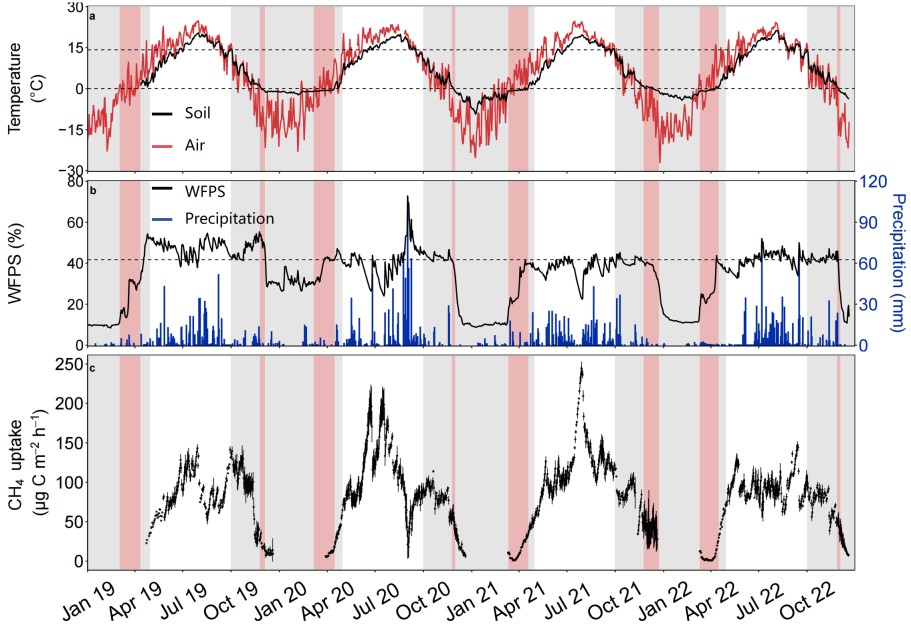Forest Soil Methane Uptake Under Detailed Investigation by Chinese Scientists
Scientists of the Chinese Academy of Sciences have developed an automated system for continuous monitoring of methane absorption by forest soils. A four-year study at a temperate forest site revealed a strong correlation between soil temperature and moisture levels and the rate of this methane uptake. The findings provide a more precise understanding of a key process in the global climate system.
Methane (CH4) is a significant greenhouse gas with a global warming potential 28 to 34 times that of carbon dioxide (CO2) over a 100-year period. Forest soils act as a major biological sink for atmospheric methane, naturally removing it through a process called methane oxidation. This process is carried out by methanotrophic bacteria in the soil, which utilize methane as an energy source.
Traditional methods of measuring methane uptake, often involving infrequent manual sampling, may not capture the rapid changes in environmental conditions such as rainfall. This limited sampling frequency can make it difficult to fully understand the relationship between dynamic changes in soil temperature and moisture and the activity of methanotrophs (methane-oxidizing bacteria), thus limiting the understanding of methane oxidation mechanisms under varying environmental conditions. To address this limitation, researchers at the Institute of Applied Ecology, Chinese Academy of Sciences, established a high-frequency automated sampling and observation system at the Qingyuan National Forest Ecosystem Research Station. Led by Professor Fang Yunting, the team continuously monitored methane fluxes in the forest soil for four consecutive years (as shown in Figure 1).
The study, published in the journal Agricultural and Forest Meteorology, showed that the forest soil consistently acted as a methane sink, absorbing an average of 5.24 kilograms of methane-carbon per hectare per year. The rate of methane absorption varied seasonally, peaking in the summer at 244 micrograms of carbon per square meter per hour and decreasing to a low of 0.8 micrograms of carbon per square meter per hour in the winter.
The research indicates that methane absorption in these soils is primarily controlled by soil temperature and moisture. While the abundance of methane-oxidizing bacteria and soil organic carbon also play a role, simple linear regression models showed that soil temperature alone explained 36% of the variability in methane uptake, and soil moisture accounted for 56%. A dual-factor model considering both temperature and water-filled pore space (Temp-WFPS) explained 86% of the annual variation in methane uptake.
The researchers also found that traditional monthly sampling can bias annual methane absorption by up to 19%. The high-frequency monitoring provides detailed daily, seasonal, and annual measurements of methane absorption and its response to changing environmental factors, offering valuable insights into the regulatory mechanisms of soil temperature and moisture on methane uptake. This contributes to the development of more accurate biogeochemical models and enhances the precision of global methane budget estimations.

Figure 1. Seasonal variations in atmospheric and soil temperature, soil moisture and daily precipitation, and soil methane uptake (Image by LIU Yuqi).



